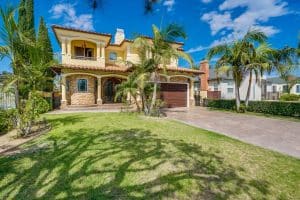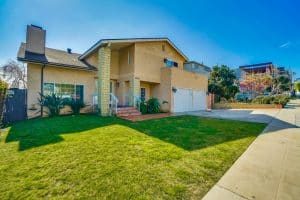Sober Living Resources for Sober Living Idaho
Idaho, located in the United States’ Pacific Northwest region, is the 14th largest yet 12th least populated state in the country. This landlocked state shares a northern border with the Canadian province of British Columbia, and it also borders other US states, including Washington, Wyoming, Montana, Nevada, Utah, and Oregon. Idaho has a long and storied history. Inhabited by indigenous peoples for thousands of years, it finally became a US territory in 1846 and a state in 1890.
Idaho is sparsely populated, and visitors are often astounded by how nature dominates the landscape. In fact, the state is often referred to as the “Gem State” because of its rare natural beauty. This beauty comes in the form of multiple distinct climatic and geographic regions, including the Idaho Panhandle, the Snake River Plain, the Great Basin, and the famous Rocky Mountains. Nearly 40% of Idaho’s land is owned by the United States Forest Service, a higher percentage than any other state. This land is the main driving force behind Idaho’s economy, which centers on mining, forestry, agriculture, and tourism.
Idaho has been through countless changes. Its chaotic path to statehood and the devastation it suffered during the Great Depression marked Idaho for a long time. Today, Idaho thrives as an agricultural state with prosperous tourism and technology industries. However, it has also recently been badly hit by the United States’ opioid epidemic. This epidemic has devastated families, communities, and Idaho’s general economy.
Substance addiction in Idaho commonly takes the form of alcohol addiction, crystal meth addiction, cocaine addiction, and prescription stimulant addiction. However, opioid addiction is currently responsible for the state’s skyrocketing addiction rates. Many of these opioids are perfectly legal prescription drugs that are nonetheless extremely addictive. Doctors in Idaho prescribe 61.9 opioid prescriptions for every 100 Idaho residents, which is far above the national average. As a result, nearly 50% of the 250 drug overdoses that occur in Idaho each year are due to opioids.
For individuals in Idaho with substance use disorders, help is available. Sober living homes offer individuals with substance use disorders an opportunity to recover in a safe and supportive environment. By taking advantage of sober living houses in and outside of Idaho, individuals suffering from addictions of all severities can hope to recover. The first step, however, is simply reaching out for help.
What Are Sober Living Homes?
During the initial days of addiction recovery, people must have a safe and supportive environment. For people whose lives have been dominated by drug and alcohol abuse for years, such environments are often hard to come by. Friends, family members, and living quarters may easily expose one to temptations. During early sobriety, people are particularly vulnerable to triggers, and simply being exposed to substance abuse in one’s proximity can be enough to precipitate a relapse.
Sober living houses are homes that provide safe and trigger-free environments for individuals in early recovery. Residents agree before they move in to stay away from drugs and alcohol. In fact, moving into a sober living home signals a commitment to recovering from drug or alcohol addiction. In a clean and sober home where all housemates are working hard to rebuild their lives, it becomes far easier to get sober and stay sober.
Moreover, living in a sober living house means acquiring a strong network of sober peers. These friendships play a pivotal role in helping people stay sober. In fact, studies on sober livings repeatedly show that the peer support residents acquire actually helps them stay sober for years after graduating. Fellow residents keep each other accountable, offer advice and feedback, and make sober life far more enjoyable.
Quality sober living homes not only help residents maintain abstinence. They provide tangible and concrete support as residents work to rebuild their lives. Initially, this may mean tackling underlying issues and repairing the damage that one did during years of active addiction. Ultimately, however, it means taking steps toward better futures. Residents get jobs, build their savings, and even enroll in academic programs that align with their goals. In a quality Idaho sober living, individuals pursue recovery in all areas of their lives and begin to acquire the gifts of sobriety beyond mere abstinence.
Sober Fun in Idaho
The very notion of “sober fun” may sound like a contradiction in terms, but it is quite possible to have fun in Idaho without needing to rely on drugs and alcohol. For individuals who spent years actively abusing drugs and alcohol in Idaho, it may be helpful to enroll in a sober living house outside the state, however. This is because addicts in Idaho may have many associations, from specific locations to specific individuals, that can be potentially triggering. After developing a strong program of recovery, returning to Idaho is possible — and you’ll quickly discover that the state actually has plenty to offer for sober people.
The key to having sober fun in Idaho, and anywhere else, is to make use of coping tools and to have a strong network of sober friends. After all, addiction is often very lonely. But with a group of sober friends, even the most boring activity, like sitting around at home, can become an occasion for laughter and joy. However, if you’re seeking ideas for fun and exciting activities for sober people in Idaho, check out the suggestions below:
Sun Valley Resort
Sun Valley, located in southern Idaho, is one of the greatest skiing attractions in the Pacific Northwest. Bald Mountain and Dollar Mountain provide skiing slopes for people of all ability levels. A gondola, thirteen chairlifts, and 2,000 acres of terrain make Sun Valley Resort Idaho’s top skiing destination. The Nordic Center also offers resources for snowshoers and cross-country skiers. However, even if winter sports aren’t your jam — the resort offers countless hikes, mountain bike trails, and other outdoor activities during the summer.
Shoshone Falls
Sometimes known as the Niagara of the West, these waterfalls are one of the most magnificent locations in Idaho. The waterfalls are 212 feet high and span more than 900 feet. They are created by the Snake River, which flows throughout the year but surges the most between April and July. Around the falls, one can easily visit Dierks Lake, which offers swimming spots, scenic views, and hiking trails. Many visitors like to check out the waterfalls before plopping down for a picnic lunch.
Old Idaho Penitentiary State Historic Site
Nicknamed “Old Pen,” the Old Idaho Penitentiary was an active prison between 1872 and 1973. Today, it is a museum that educates people on prison history in general, and the history of Idaho prisons specifically! Visitors can learn about Idaho’s most infamous criminals and check out the disturbing cell blocks, solitary confinement rooms, and even the gallows. Some people even say this prison is haunted.
Kirkham Hot Springs
Learning to relax without the use of drugs or alcohol is an important aspect of addiction recovery. The beautiful Kirkham Hot Springs is the perfect location to do just that. These natural soaking spots aren’t necessarily easy to access: you’ll have to do a bit of a hike to get there. But they’re well worth the effort; there’s a reason these are the most popular hot springs in Idaho.
Craters of the Moon National Monument
In southeastern Idaho, south of Arco, lies the Craters of the Moon. If the name sounds otherworldly, you’re right — it gets its name from the lunar quality of the landscape. Almost 15,000 years ago, volcanic eruptions resulted in lava flows that created this fascinating zone. In fact, while there hasn’t been an eruption in the last two thousand years, this area is still geologically active. The lava flows are beautiful in and of themselves, but there are also caves to explore for the more adventurous visitors.
Bruneau Dunes State Park
This unique park is home to the largest collection of freestanding sand dunes in North America. There is truly nothing like it in Idaho — or the rest of the country for that matter. The best way to explore these dunes is by trekking. Another popular alternative is going sandboarding! There are also over 80 campsites in the park, allowing people to spend the night and truly immerse themselves in the landscape.
Benefits of Idaho Sober Livings
Recovering from a drug or alcohol use disorder takes plenty of time. Getting sober is only the first step. After that, people need to ensure that they will stay sober. They do so by developing a strong peer support system, learning new coping skills, and addressing issues that may have been driving them to abuse drugs and alcohol in the first place. Throughout this process, individuals in recovery can begin to acquire the gifts of sobriety — namely, a better, more joyful, and more fulfilling life. Every aspect of this process takes work. Ultimately, it is a process that never ends, because it keeps on offering more rewards.
Sober livings allow people to get plenty of support every step of the way as they traverse their recovery journeys. Many sober living homes allow residents to stay for over a year as they work on becoming independent. During a person’s time at a sober living, there are countless benefits they enjoy. These include:
Smooth Transitions from Rehab
Sober living homes are not clinical treatment centers. However, they are often suggested as part of an aftercare program for recent graduates of treatment centers. After graduating from rehab, it is rarely a good idea to jump immediately back into one’s old life. The transition can be too abrupt. Sober living homes provide recent rehab graduates with the time and support they need to build quality sober lives for themselves. Best of all, engaging in aftercare programs like sober living houses has been shown to significantly reduce relapse rates.
Staff Support
Sober living homes are staffed by passionate individuals who have generally been through the recovery process themselves. House managers and sober living staff often live on-site, ensuring 24/7 support for house residents. They are available to handle emergencies, answer questions, keep house members accountable, and ensure a level of structure and predictability in the home. For parents or other loved ones, staff members are always available to address questions or concerns.
Peer Support Networks
Addiction experts often refer to addiction as a disease of loneliness. Substance abuse results in interpersonal conflicts as well as a tendency to isolate. While living in an Idaho sober living house, residents have the opportunity to connect with other people who share similar experiences. They can receive advice, get emotional support, and hold each other accountable. Best of all, these relationships often remain a source of joy and fulfillment long after residents have graduated.
Life Skills
Sober living homes aim to prepare residents for life in the outside world. As such, they not only help young people learn coping skills for avoiding relapse, but they emphasize everyday life skills as well. Sober living homes help residents learn self-care, support them as they seek employment and educational opportunities, and make sure they are well prepared for an independent and autonomous life.
Is Idaho Sober Living Right For Me?
Attending a sober living home is a good idea for a wide range of people. Many successfully utilize sober living homes from the get-go as a first-line approach to addiction recovery. Others make use of sober livings as part of a transition from residential treatment to independent living. No matter where you are on your addiction recovery journey, a sober living facility can help you reach your goals.
Whether or not to attend a sober living home in Idaho is a personal decision. One of the main benefits of sober living homes is that they offer a safe and trigger-free environment that allows residents to remove themselves from their prior lives. For Idaho residents who have spent years abusing drugs and alcohol in the state, leaving Idaho entirely might be a good idea. Even in a sober living home, there will likely be far too many reminders of one’s past life — and it is far too easy to slip back into old habits.
Fortunately, there are many quality sober living houses outside of Idaho. In California, for instance, there are many structured sober livings, a type of sober living house that offers significantly more support and resources. California is also home to a thriving recovery community, in part because of the prevalence of 12-step programs in the city. For example, AA and NA meetings meet at all hours of the day throughout the area. Southern California’s health-conscious and open-minded culture, as well as its natural and cultural offerings, make it ideally suited to Idaho residents who are looking for a fresh start.
Recovery is Possible at Design for Recovery
For Idaho residents who are ready to make a change, Design for Recovery is Southern California’s top sober living home. Design for Recovery is a structured sober living home that is designed to meet the needs of young men whose lives have been devastated by substance addiction. Residents work on developing new coping skills and tools, address underlying issues, and begin working toward building a better future. More importantly, they do so together, as part of a tight-knit community.
At Design for Recovery, our staff firmly believe that physical abstinence is simply the foundation for a lifelong process of growth. Our residents and staff alike strive to live by strong sober principles, including honesty, integrity, and accountability. These values are the backbone of successful addiction recovery — and success in life in general. By the time young men are ready to leave Design for Recovery, they will not only possess the tools they need to stay sober over the long term, but they will be ready to face the everyday challenges of life.
If you are ready to make a fresh start, contact Design for Recovery for a free and confidential consultation. No matter where you’ve been, recovery is possible.
Frequently Asked Questions
A sober living home is a safe, substance-free residence for people recovering from addiction. It acts as a transitional housing option, bridging the gap between inpatient facilities and the real world. sober homes, usually located in quiet neighborhoods, help individuals reinforce their rehab lessons. They provide a cost-effective living environment and support sobriety. Sober living homes are peer-managed and expect residents to pursue better health and a substance-free life. They strictly enforce rules, with violations leading to eviction. Rules include signing a contract, attending support group meetings or outpatient treatment, and paying rent. Costs vary based on location and services.
The cost of residing in sober living homes in Idaho can vary depending on factors such as the location, type of residence, available amenities, and the nature of the program. Monthly expenses range from $2,000 to $10,000. Some homes provide structure rather than a formal program, reducing costs. Utilities may be included or rationed. Rent is typically charged monthly, without requiring upfront payment. Resources like insurance, grants, sliding scale payments, and payment plans can help cover costs.
The length of stay at sober living houses in Idaho are not fixed and can vary depending on the individual’s needs and the rules of the house. However, it is commonly advised to spend a minimum of 90 days in treatment and sober living before reintegrating into society.
Entering a sober living in Idaho has numerous benefits for individuals in addiction recovery. These include:
- Safe and pressure-free living space
- Supportive environment promoting discipline and sobriety
- Reinforcement of rehab lessons
- Bridge between inpatient care and independent living
- Transition support from treatment to independent life
- Structured environment for regained stability
- Distance from triggers and temptations
- Connection with others in recovery for shared insights
- Job search/placement assistance
- Additional counseling
- Long-term residence option
- Improved physical and emotional well-being
Some sober living houses in Idaho allow pets, while others do not. Pet-friendly homes offer benefits such as healing, joy, discipline, life lessons, unconditional love, and stress reduction. However, rules and regulations regarding pets vary by home, and residents must adhere to them if pets are allowed.
Read Further: Sober Living that Allows Pets
Yes, sober living in Idaho does help residents find employment. These homes actively support residents in their job search and employment goals. They may require residents to be actively working or seeking employment while residing in the homes. Many sober living homes offer valuable resources and assistance to residents, such as resume writing, job application support, and skill training. Some homes even provide onsite job opportunities for residents as they transition out of the program. By promoting employment, sober living homes aim to help residents meet their financial responsibilities and develop a sense of accountability.
Visiting rules in a sober living home vary. Some homes may prohibit opposite-sex visitors or any drugs/alcohol. Approval is often required in advance, and curfews must be respected. Overnight guests are generally not allowed. Residents must show respect to housemates and staff. It’s important to inquire about specific visitor rules at each recovery home.
Design For Recovery also organizes regular events during which family members are invited to congregate with house members.
The rules regarding cell phones in sober living houses may vary depending on the specific sober living house. At Design For Recovery, we limit cell phone access for residents in the early days of their recovery. This gives them the opportunity to focus on their present circumstances and the present moment, cultivate real relationships with fellow house members, and look inward.
These policies may not necessarily apply to all sober living homes. Therefore, it’s recommended to ask each potential sober living house what their rules are regarding cell phones.
Idaho Sober living homes offer alcohol- and drug-free environments for individuals maintaining abstinence. Expectations include:
- Safe community for physical, spiritual, and emotional growth with peer support
- Required sobriety, participation in meetings, and activities
- Guidelines like curfews, screenings, and respect for others
- Peer-managed homes supporting sobriety
- Live-in managers ensuring accountability
- Supportive community fostering sobriety and personal growth
- Varying costs and no-cost options available
The house rules for sober living homes in Idaho may vary, but here are some common guidelines:
- Sobriety: Residents are required to maintain sobriety and abstain from alcohol and drug use while residing in the home.
- Meetings and Activities: Active participation in 12-step meetings, counseling sessions, or other recovery-related activities may be expected.
- Curfew: There might be a set curfew that residents need to adhere to, ensuring a structured routine and promoting responsibility.
- Drug Testing: Random or regular drug testing may be conducted to ensure compliance with the sobriety requirements.
- Chores and Responsibilities: Residents may be assigned household chores and responsibilities to maintain cleanliness and a sense of community.
- Respect for Others: Mutual respect and consideration for fellow residents’ privacy, boundaries, and recovery journeys are typically emphasized.
- Visitors and Guests: Guidelines regarding visitors and guests, such as limitations on visitation hours or prior approval requirements, might be in place.
- Financial Obligations: Residents are expected to pay rent and other associated expenses promptly and fulfill financial obligations.
- Supportive Environment: Creating a supportive and nurturing atmosphere, fostering personal growth, and encouraging peer support and accountability may be part of the house rules.
Staff members also enforce several sober living house rules designed to ensure a safe and healthy environment for residents.
Sober living homes provide a supportive environment for sobriety, offering:
- Substance-free space for real-world responsibilities
- Peer support from individuals with similar experiences
- Community support and encouragement
- Randomized drug and alcohol screenings
- Accountability through house rules
- Job assistance and connections to local employers
- Possible oversight from treatment providers
- Bridge between inpatient care and real-world transition
- Reinforcement of rehab lessons
- Safe space to develop habits and coping mechanisms
Amenities and services vary by sober living homes, so it’s best to inquire about specific offerings at each potential home.
The success rates of men’s sober living in Idaho vary based on individual circumstances and dedication to recovery. However, research has shown that staying in a structured and supportive environment like a men’s transitional living significantly increases the chances of maintaining long-term sobriety compared to going directly back to independent living post-treatment.
Scholarships and financial aid are available for sober living. Options include:
- Grants for medical and living expenses
- Financial aid from treatment facilities
- Government grants from the Sober Living Foundation
- Healthcare grants for various medical needs
- No-cost options like halfway house programs
- State and federal funding, such as SAMHSA grants
Scholarship availability varies by program and location, so inquire about specific options at each sober living program.
Staying in a men’s sober living house long-term offers benefits for recovery:
- Smooth transition to daily life
- Ongoing support for lifelong recovery
- Reduces relapse risk by eliminating substances
- Eliminates triggers in early sobriety
- Provides structure and support
- Increases chances of long-term sobriety
- Offers job training and preparation
Benefits may vary by individual and program, so inquire about specific long-term benefits at each men’s transitional living house.
Finding the right sober living home can be challenging. Here are tips to help you:
- Determine your needs: Consider budget, structure, and privacy preferences.
- Research options: Look for local sober living homes and explore their programs and amenities.
- Visit and tour facilities: See if they meet your needs during a visit.
- Consider rules and structure: Look for consistent enforcement and adherence to house rules.
- Seek peer support: Choose homes with a supportive community of individuals with similar experiences.
- Look for job training and programs: Consider homes offering programs to aid long-term recovery.
Availability and offerings may vary, so research multiple options and visit facilities to find the best fit for you.


















